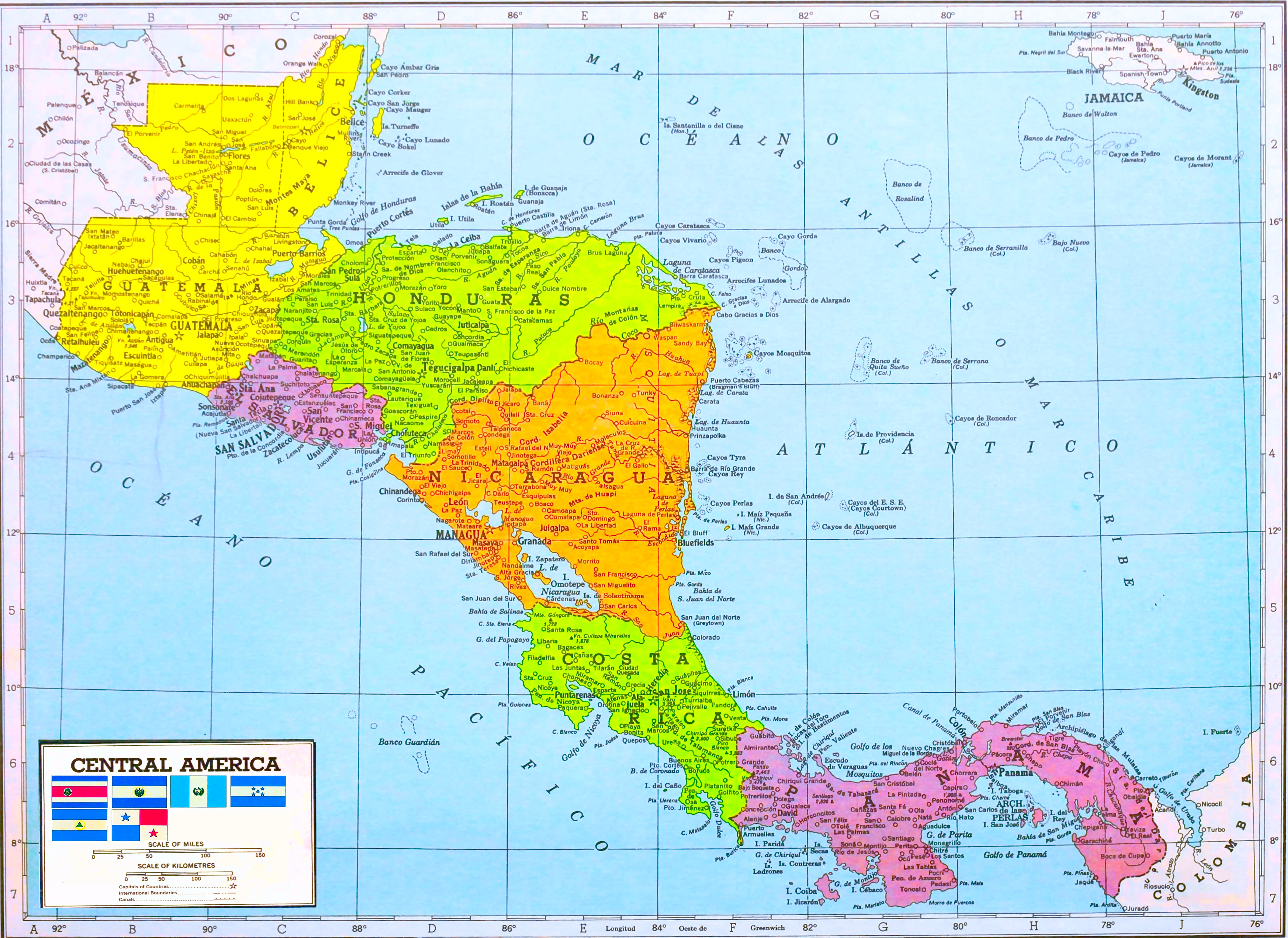HOME | DD
 WogofJog — Detailed Map of Central America ('Native' POV)
WogofJog — Detailed Map of Central America ('Native' POV)

Published: 2023-10-29 08:08:44 +0000 UTC; Views: 1697; Favourites: 18; Downloads: 6
Redirect to original
Description
As North America decreases in size from a land of magnificent distance to a slender neck of land where the Isthmus of Panama joins South America, the sizes of its nations shrink to an even greater extent. In Central America, a string of six small countries, Guatemala, Honduras, El Salvador, Nicaragua, Costa Rica, and Panama, is confined to an area less than that of the State of Texas. Their total population does not equal that of New York City. The cordilleras a continuation of the mountain chains starting far north in Alaska, extending the entire land length. Many of the peaks are volcanic, and frequent eruptions occur. These mountains have formed many high and fertile plateaus that provide fine pasturage for livestock and rich soil for a diversity of crops. As in Mexico, the tropical climate of the lower regions is tempered by the elevation of the high plateaus. Harbors are on both coasts, with the principal seaports on the Caribbean Sea. Most of the rivers that flow into the Caribbean are navigable.
These agricultural nations have become increasingly important in the past few years. Central America's future became one of promise with organizing the Pan-American Union, the growth of air travel, and the fostering of a new spirit of cooperation between the republics of North and South America. When global war shut off supplies of many important crops to the Western World from the East, it was found that here in the Americas, they could be grown necessities that formerly had been imported from afar. Great variations in soils, rainfall, and terrain afford and temperate crops. Experiments have successfully produced important quantities of spices, fibers, and essential oils for medicinal and industrial purposes that were introduced from the East. Among the important crops exported almost exclusively to the United States are bananas, natural rubber, coffee, rope fibers, and cacao, and sugar. Although there is potential mineral wealth in most countries of Central America, this resource has been exploited for the most part. Much of the land is heavily forested and some of the world's most valuable woods such as mahogany, rosewood, teak, and ebony are found here. However, only a very small part of the forests have been as yet cut for commercial purposes. This region has been subjected to extensive American intervention and occupations. From Guatemala to Panama the stain of the American Empire is felt. The we employed regimes and occupations to control the economies and societies of the region. Though not physically owned by the US, this honor was left to the Panama Canal Zone, the region has been extensively colonized by American Empire.
























